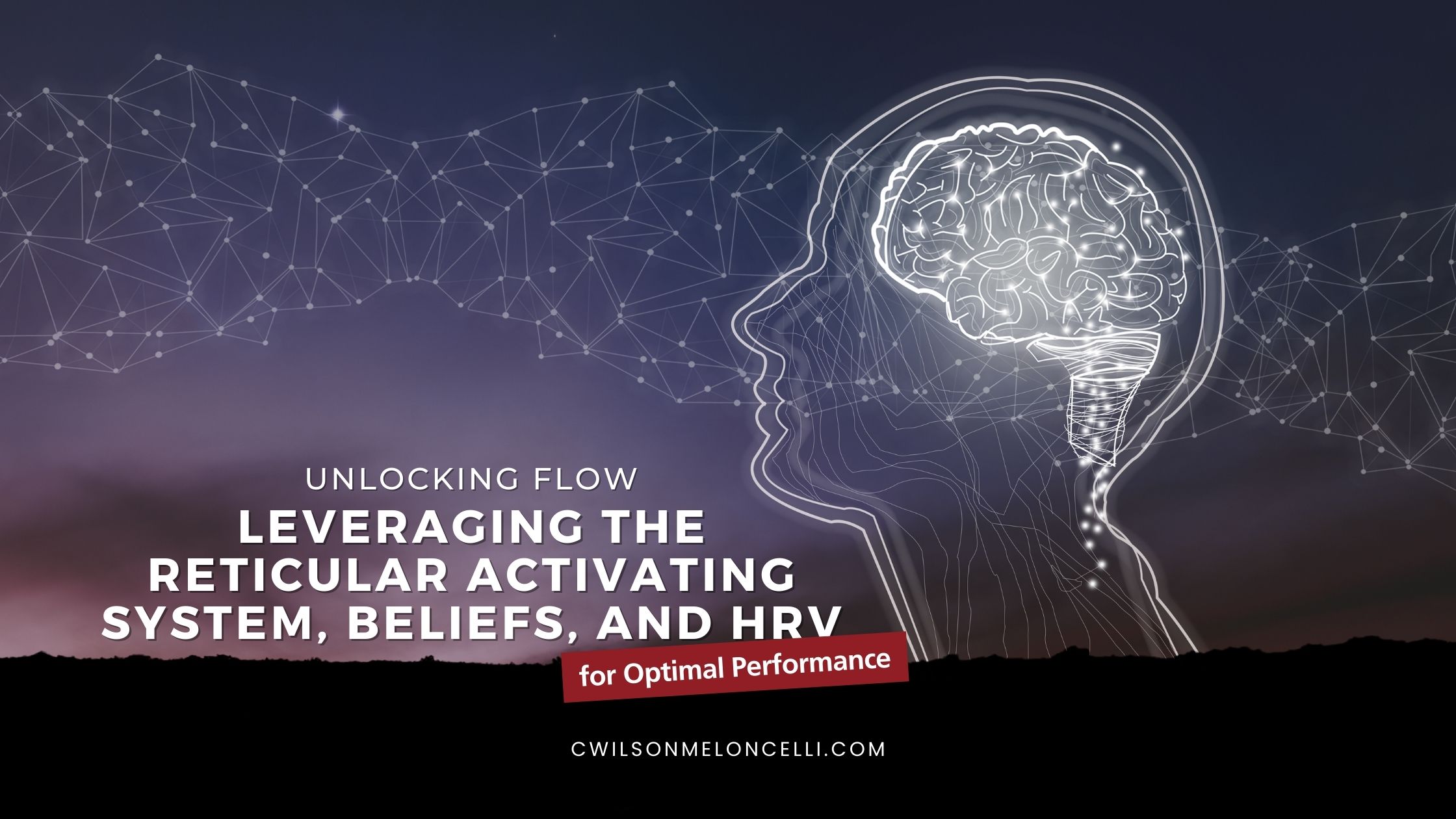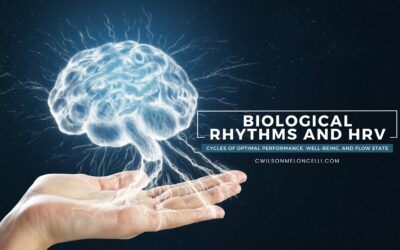
The Reticular Activating System (RAS) plays a crucial role in filtering sensory information and influencing what we notice in our environment. This selective attention mechanism is closely tied to our belief systems and the state of our Autonomic Nervous System (ANS). Understanding and harnessing these connections can help individuals achieve a state of flow, particularly when engaging in new activities, and maintain consistency in this optimal state. Heart Rate Variability (HRV) emerges as a valuable tool in this process, providing insights into ANS balance and readiness for peak performance.
The Reticular Activating System (RAS) and Beliefs
The RAS is a network of neurons located in the brainstem that regulates wakefulness and attention. It acts as a gatekeeper, filtering incoming stimuli and determining what reaches our conscious awareness based on our needs, goals, and beliefs.
Belief Systems and Attentional Bias:
Our beliefs shape how the RAS filters information. For instance, if someone believes the world is a dangerous place, their RAS will prioritize potential threats, making them more alert to negative stimuli. Conversely, positive beliefs about safety and interconnectedness can lead the RAS to highlight supportive and harmonious experiences.
Cognitive Confirmation:
This filtering process contributes to confirmation bias, where the RAS preferentially processes information that aligns with pre-existing beliefs, reinforcing these beliefs over time.
The Subconscious Mind and Information Processing
The subconscious mind can process a vast amount of information simultaneously, estimated to be up to 20 million bits of information per second, compared to the conscious mind’s ability to process around 40 bits of information per second. This vast processing capability of the subconscious mind significantly influences the RAS, as much of the information filtered through the RAS operates below the level of conscious awareness.
The Autonomic Nervous System (ANS) and Stress
The ANS regulates involuntary physiological functions, including heart rate, digestion, and respiratory rate, through its sympathetic (fight-or-flight) and parasympathetic (rest-and-digest) branches.
Chronic Stress and ANS Imbalance:
Prolonged stress can lead to an overactive sympathetic response, resulting in heightened anxiety and vigilance. This state can negatively affect the RAS, reinforcing a focus on fearful and stressful stimuli.
Influence on the RAS:
When the ANS is stressed, the RAS may become hyperactive, exacerbating attentional biases towards negative information. This interplay underscores the importance of managing stress to maintain a balanced and positive perceptual framework.
Heart Rate Variability (HRV) as a Tool for Achieving Flow
Heart Rate Variability (HRV) measures the variation in time between heartbeats and is a marker of ANS balance. Higher HRV indicates greater adaptability and a well-functioning parasympathetic system, which is conducive to achieving flow.
Monitoring HRV:
By tracking HRV, individuals can gain insights into their ANS state and readiness for peak performance. A balanced ANS, indicated by higher HRV, suggests a greater capacity for entering and sustaining flow.
Flow State and HRV: Research indicates that individuals in a flow state often exhibit higher HRV, reflecting a calm but alert nervous system. This state is characterized by focused attention, reduced self-consciousness, and an optimal challenge-skill balance.
Strategies for Finding and Sustaining Flow
- Beingfulness and Positive Reframing: Cultivating beingfulness and actively reframing negative thoughts can positively influence the RAS and ANS. Practices such as meditation and neuro linguistic programming techniques help shift focus towards positive and constructive stimuli, fostering a conducive environment for flow.
- Consistent HRV Monitoring: Regularly monitoring HRV provides feedback on stress levels and ANS balance. This information can guide adjustments in activities and stress management techniques to maintain an optimal state for flow.
- Incremental Challenges: Engaging in activities that offer a progressive challenge-skill balance encourages flow. Gradually increasing the difficulty of tasks ensures that they remain engaging without becoming overwhelming.
- Environmental and Social Support: Surrounding oneself with positive influences and supportive environments reinforces positive beliefs and reduces stress, aiding the RAS in highlighting constructive experiences.

The interplay between the RAS, belief systems, and the ANS highlights the profound impact of our internal states on perception and performance. By leveraging HRV as a tool to monitor and manage ANS balance, individuals can create conditions conducive to achieving and sustaining flow, especially when tackling new challenges. Through mindfulness, positive reframing, and supportive environments, we can harness the power of these interconnected systems to enhance well-being and performance consistency.
If unlocking the flow state and leveraging the RAS and HRV for optimal performance is your focus, I encourage you to watch this detailed tutorial on the subject.









